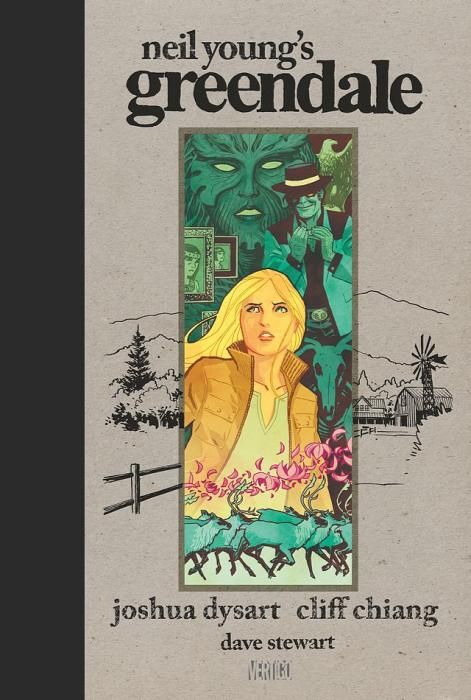If I were going to spin a modern-day fable in the format of a graphic novel, the first artist that springs to my mind is Cliff Chiang. His art is effortless, with a weight that defies the simplicity of line he uses. Telling a tale based in the real world would inspire many artists to cram the story full of detail, drawing every wrinkle and stitch. Chiang doesn't do that. Chiang draws the wrinkles and stitches that matter, the ones that crease the fabric and create shadow, the ones that make the story and the characters deeper.
This graphic novel is the story of Sun Green and her family. Sun is growing into herself and finding out what is important to her. Unlike most other teens, however, Sun is choosing to act and to impact what she deems as important. Along the way, however, a whole bunch of changes, challenges, and choices impact Sun and those around her.
Chiang seizes the opportunity presented to him and makes the absolute most of it. His characters are distinctive and human, the world they live in breathes with them. In his work here, Chiang throws in a visual wink and nod, drawing Neil Young into this story as both Jed Green (a younger Neil) and the Bandit (the antagonist of this tale).
This is a story set in California with the looming threat of war in Iraq hanging in the background and over the heads of all the characters involved. None of these characters are heading into war, but all of them are fighting it. Neil Young has never shied away from voicing his opinions on the problems he sees in the world we all share. This is no exception, except Joshua Dysart takes Young's base story and accentuates it into a fable. In doing so, Dysart makes this a story that is entirely focused on Sun and her family and avoids making this story a tale that rails against the Bush administration, which this book could have easily become.
In her own words, Sun Green is waging a war of her own, standing up for what she perceives as right. "A war against the overwhelming lack of imagination that has led us to total systemic corruption," is what Sun is fighting against. She's not fighting on the front lines in another country; She is fighting against the front lines in her country.
This story transcends just rehashing Young's album in another format. Like Sun's dreams, this story takes on a life of its own, becoming much deeper and richer as it continues on. Sun's battle against the Bandit (or the Strange, or the Devil) is both metaphoric and literal, as Sun struggles to discover what it means to be a woman in the Green family.
Chiang, Stewart, and Klein make this book quite unlike anything else to hit the racks in recent memory. Although it is brand new, the creative team chose to make this book look and feel old. The outer cover has no dustjacket, the inside pages appear faded and worn, with dingy spots where a new book should be dazzlingly white. There are no heavy black lines in this book, but rather dark drown lines that could have once been black, save for time and wear.
"Neil Young's Greendale" is a book that is meticulously presented to be accessible to anyone, whether a fan of Young's, Dysart's, or Chiang's, or simply a new reader to all of this. The language in this book is coarse, so I would recommend against sharing this with just anyone, but for mature readers, this is a solid read that perfectly illustrates that graphic novels need not be superhero-centric to be gripping, powerful stories. As a graphic novel, it is done in one, with little need to follow this any further beyond the back cover.
This book is a perfect blend of concept, story, and art. All of the creators are among the tops in their area of contribution to this project, and all of them bring their best effort to this piece. Chiang's art is breathtaking, Stewart's colors are magnificent, and Klein's lettering is solid. Dysart's interpretation of Young's story comes through as a journey for the reader to be immersed in. It's not a quick read, but it shouldn't be. Like Young's original album, this story appears intended to evoke the reader to take a good look around himself (or herself) and determine what can be made better and how.

